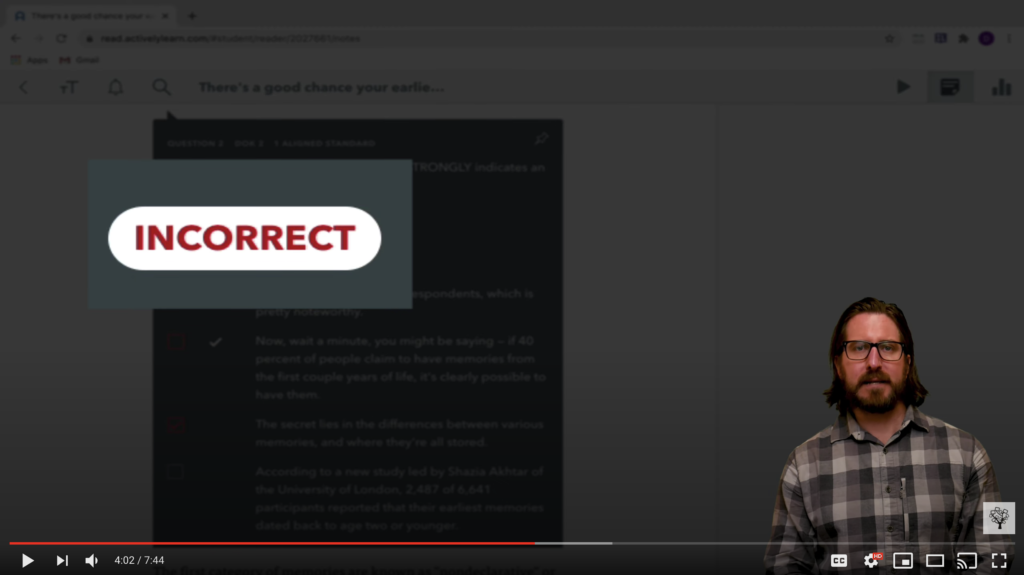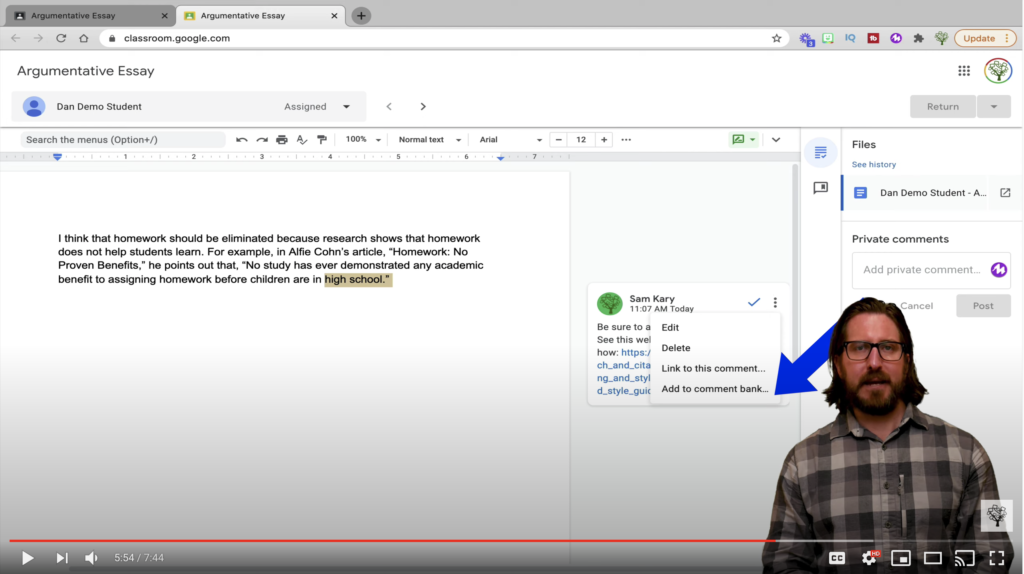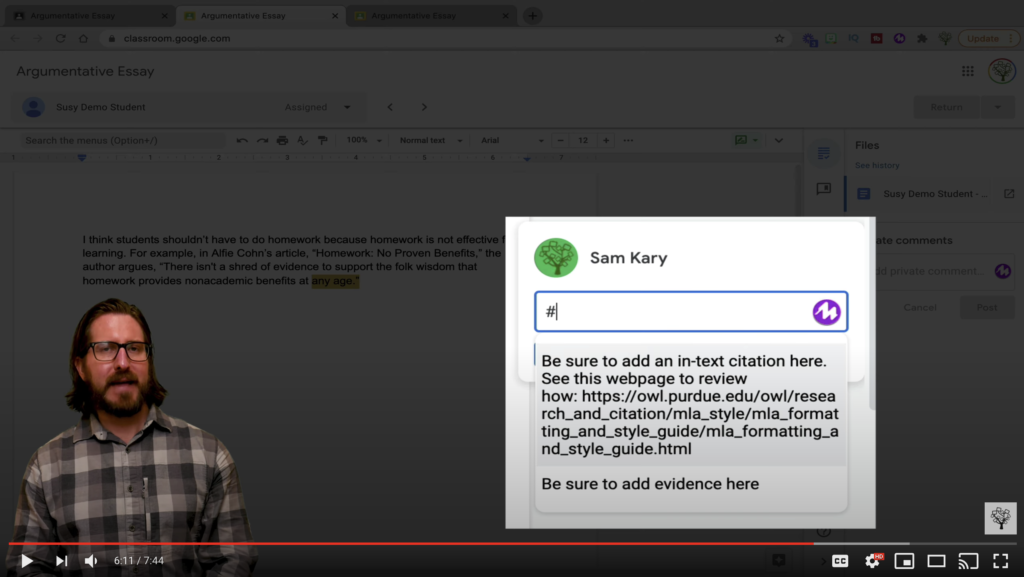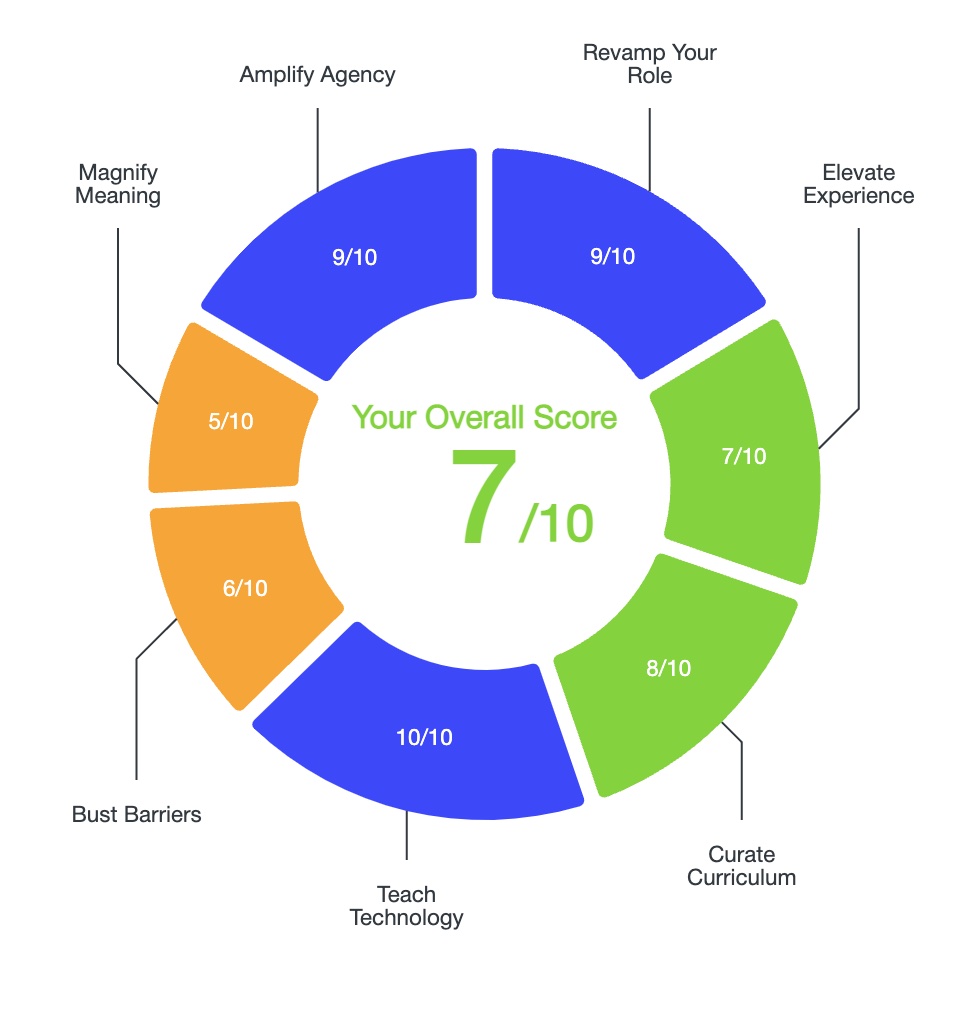Today’s tip is to reduce the time you spend grading by giving real time feedback.
One of the hardest aspects of being a teacher is the fact that you’re expected to work all day during your scheduled hours, but then often have to spend your free time preparing for the work you do in your scheduled hours. Between sending emails, corresponding with families, prepping lessons, grading assignments, filling out paperwork, the list goes on, teachers literally have an entire second work day outside of their actual work day when they are teaching students!
From that list, one of the most time intensive tasks involves grading student work. Not only does grading take up your free time, doing so outside of class often isn’t even the most effective way to give students feedback and accelerate learning.
It Starts with a Mindset Shift around Grading
Before we get into specific strategies, it’s important to take a moment to reflect on the entire concept of grading. I know when I started teaching I felt as though I needed to enter a grade for every single assignment, and that by doing so, I was also communicating to my students that every assignment mattered. The problem with this method, however, is that not only are you breaking your back trying to get every single little assignment into the grade book, you’re also starting to create an environment that discourages making mistakes. In other words, by grading everything, you might inadvertently be creating a classroom that isn’t as conducive to learning.
Research shows us that in order for people to learn new information they need to feel safe to make mistakes and they need to be given immediate feedback about what they are doing well, and where they need to improve.
Let’s imagine for a second that you’ve enthusiastically decided to learn a new, challenging skill, like how to sail a boat. Then imagine that immediately upon starting lessons, you are given grades for your performance on the water. Didn’t execute that turn correctly, that’s a D, tied that knot wrong, a C. And those grades will stick with you up until the very end, so you might be making so many mistakes along your learning journey that you’re saddled with a C in the end, even if you ultimately learn everything you need to know and ace the final exam. On top of that, imagine that you don’t even get detailed feedback about what exactly you are doing right or wrong until a few days, or even a week after a lesson. Could you even remember what that feedback was about let alone apply it in any way that makes sense? I don’t know about you, but if this were my experience in a sailing course, I’d likely lose interest in pursuing the hobby.
The point I’m trying to make is that if our goal is to create the most ideal environment for learning, and I think it should be, then we need to be encouraging mistakes as well as giving students immediate feedback. This also means that rather than trying to figure out how to integrate all the tech programs you use with your grade book, it’s more important to find ways to use those tech programs as a way to communicate how students are doing in the moment.
Use Technology as a Tool to Give Real Time Feedback
First, let’s look at a program like Actively Learn.
Actively Learn allows you to add custom interactive questions to articles you assign to students that they have to answer in order to proceed through what they are reading. Rather than assign an Actively Learn article for students to read outside of class, assign the article to them during class, and as their responses come in, give them immediate feedback on their answers.

For multiple choice questions, you don’t actually need to do anything because students will see whether or not they got an answer correct right after they answer the question.

For short answer questions, you could give students an immediate formative grade and/or give them quick written feedback on an answer they submit. If what they wrote isn’t correct or needs work, have them go back and revise their responses. Have a follow-up activity or an extension activity ready to go for students who finish the article sooner than others and then then, once all students are done answering the questions, go over the responses as a whole group use the opportunity to discuss or reteach questions that a larger percentage of students got incorrect.
Other programs like Edpuzzle which you can use for interactive video, work almost exactly the same.
To read more about how to use Edpuzzle for interactive video, click here.

Next, let’s look at how you could use Google Classroom to give students realtime formative feedback on their work in class.
Let’s say that students are drafting an essay and you want to give them feedback on the work they are doing. And let’s say, for example, that you’re having students work on how to correctly integrate quotes as evidence, as well as how to explain why their evidence matters. You could take hours outside of class handwriting personal comments, or, you could give students in the moment feedback using automated comment banks. Let’s look at how.
First, make sure you’ve assigned the assignment to students by making a copy of the assignment for each student.

Then, once students have opened their assignments and started working, click “View Assignment” and select an individual student’s work.

Once you’re in the assignment, highlight the part of the text where you want to leave a comment, and select “comment.”

Write the comment you want to leave, and then after you’ve left the comment, click on the three dots next to it and select “Add to Bank.” This will add your comment to a comment bank, allowing you to quickly access again.

So now if you are in another student’s assignment, and want to leave the same comment, simply highlight the text, select comment, and this time add the hashtag symbol in order to access a dropdown menu of comments you’ve already written. This way, rather than giving students feedback on final drafts, you’ll be helping them correct their errors immediately, and even if you do end up grading final drafts outside of class, at least you’ll have a bank of comments you can easily access.

Conclusion & Resources
Virtually every program can be used to give students live, in-the-moment feedback on their work so rather than worrying about how to transfer results from the programs you are using into your grade book, focus more on how you can use those programs to give students feedback that will accelerate their learning while also drastically cutting the amount of time you need to spend grading outside of class!
For additional strategies for how to use technology to personalize learning, increase engagement, foster creativity, and more, click here:
How to Use Education Technology: The Ultimate Guide
And to read more about why I believe technology must be a central part of public education today, click here:
Why Education Technology?: The Ultimate Guide
Interested in the software I use to create my videos? Check out the links below! Many of these products offer a free trial to start and just clicking on the link helps to support The New EdTech Classroom!
Screenflow is a dynamic, intuitive video editing software that I use to create all of my YouTube videos. They’re currently offering a free trial! Get more details here.
I use Adobe Spark Post to design all of my YouTube thumbnails, as well as all my social media graphics. More information here.
If you’re interested in creating a website, these are a couple of programs I personally use and highly recommend: Bluehost is a web host that offers a professional platform for your website. You can check them out here.
Elementor is a powerful tool that helps with clean visual design for your website as well as marketing to further your website’s influence. More details here.

